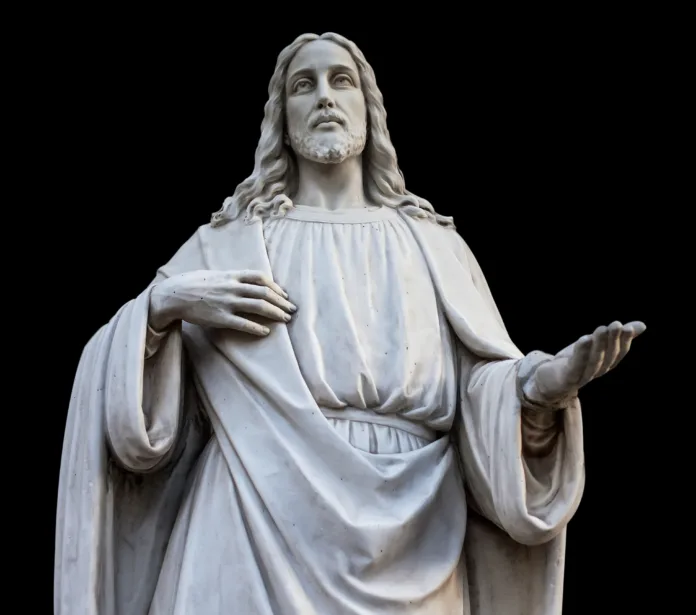Growing up, one of my favorite things to do was to go to the Zoo. And besides seeing the animals themselves, there were two other things which I loved to do there. The first was to ride the train, and the second was to make one of those elongated souvenir pennies. I don’t know if you can still get those at the Zoo, but I thought they were really cool as a kid. My parents probably thought they were a waste of money, which they quite literally were: you literally paid money to ruin money. But you’d put your penny and your dollar—or however much it cost—into one of the machines, the gears would turn, and the penny would be pressed and imprinted with a new image. Abe Lincoln would disappear, and a monkey, or a dinosaur, or something else would take his place. And sometimes this worked well, and the image was sharp and distinct, and sometimes it worked not so well, and the image was blurry and vague. There was always an image on the penny, but sometimes it bore a greater likeness, and sometimes a lesser likeness, to the stamp from which it was made.
If someone were to ask us how we were made, I think most of us would respond by saying that we were made in God’s image and likeness. But if someone were to ask us what it means to be made in God’s image and likeness, or if there is a difference between God’s image and God’s likeness, how would we respond?
What does it mean to be made in God’s image? An image is simply a copy of an original. Because it is a copy, an image always bears some likeness to the original. But the likeness can be greater or lesser depending on the quality of the copy. If the copy has everything which the original has, then the image has a perfect likeness. If something is missing in the copy, then the likeness of the image is diminished. The monkey on the souvenir penny is an image, because it is a copy of an original—the original stamp from which it was made. But the monkey on the penny may bear a greater or lesser likeness to the original based on the quality of the copy.
Now God the Father has an image of Himself. He is the original, but there is a copy of Him. And that copy, that image, is God the Son. God the Son is a perfect image of God the Father, He has everything that God the Father has, and therefore bears a perfect likeness to Him. St. Paul says that Jesus, who is the Son of God, “is the image of the invisible God” (Colossians 1:15). Jesus Himself said, “Whoever has seen me has seen the Father” (John 14:9). This is what we mean in the Creed when we say that the Son is “consubstantial” with the Father: It means that He is the perfect image of the Father; He has everything that the Father has: the same Truth, Goodness, and Beauty.
Now human beings weren’t made with some sort of giant penny press. But when God the Father created us, He made us according to a certain pattern, with a kind of stamp. And that pattern, that stamp, is His Son. To be made in the image of God is to be made according to the pattern of the Son. God the Son is the stamp which God the Father uses to create us in His image. And what does this pattern, this stamp, look like? It looks like knowing and loving God the Father. For that is what the Son does—or rather, who the Son is: The Son knows and loves the Father.
Every human being is made in the image of God because every human being has the capacity to know and love God the Father. And that capacity, and therefore that image, can never be entirely lost. But the quality of that image in us, its sharpness and distinctness, can vary based on whether we use that capacity, whether we actually know and love God the Father. The more we know and love the Father, the more we will resemble the Son, and so the greater our likeness to God will be. And the less we know and love the Father, the less we will resemble the Son, and so the lesser our likeness to God will be.
What is the quality of the image of God in us? Is it sharp and distinct, or is blurry and vague? Do others see the pattern, the stamp, of God the Son in us? Do we bear a striking or a mere passing resemblance to Him?
When Jesus was handed the Roman coin in our gospel He asked, “Whose image is this?” When we are handed to God the Father at the Final Judgment, will He recognize the image of His Son in us? Or will He say, “Whose image is this? This is not the image of my Son. I do not recognize you; I do not know you; depart from me.”
The image of God belongs to God, because it is God Himself: The image of God is God the Son. And the image of God has been given to us as a gift. Our being made according to its pattern, our being stamped with it, is a precious gift. Have we given this gift back to God by knowing and loving Him? The Roman coin bears Caesar’s image, and so it belongs to Him. We bear God’s image, and so we belong to Him. “[R]epay to Caesar what belongs to Caesar and to God what belongs to God.”
Unlike the image of Abe Lincoln on a penny, the image of God cannot be entirely pressed out of us. But it can be tarnished, it can be weakened, it can become blurry and vague. But by God’s grace, by His love and mercy, that image can be polished, strengthened, sharpened, and made more distinct in us. The likeness to God, once lessened, can become greater again. Let us strive to know and love God the Father more this week. Let us strive to grow in His image, in Jesus Christ His Son. Let us repay what belongs to Him.


